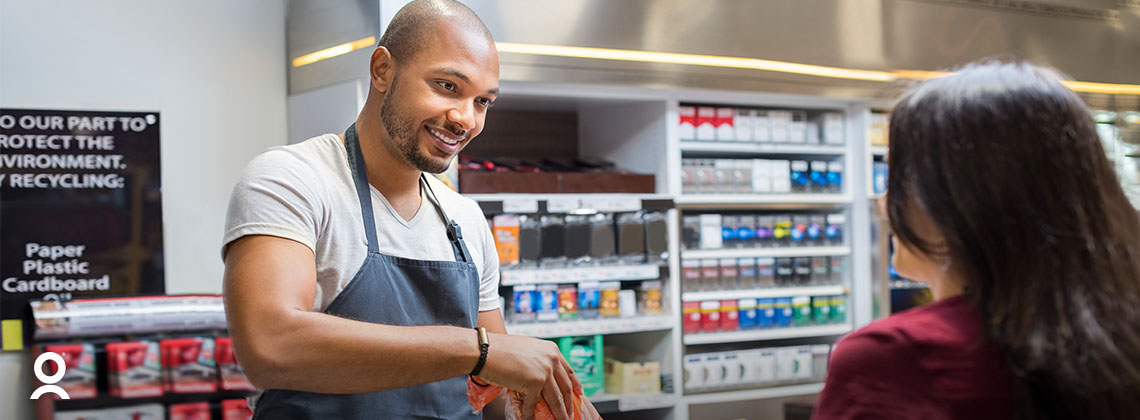Retail Execution Strategies Every Retailer Should Know

When customers visit a store and find the products they want, they’re likely to see it as a successful trip. But even simple transactions have plenty going on behind-the-scenes. In fact, the retail execution strategy lays the foundation for providing shoppers an easy, enjoyable shopping experience.
Retail execution strategies allow retailers to oversee and implement store-level tasks that ensure stores appear and perform the way they’re intended. These strategies include everything from inventory checks to promotional and visual merchandising audits that make sure the right products are in the right place and available at the right time. When implemented correctly, a well-defined and executed retail execution strategy can boost store performance and sales.
Shoppers tend to spend more money in-store than online and are far more likely to add “impulse” items to their purchase in-store. So, having shelves that are well-stocked, well-organized, and appealing to the buyer can be the deciding factor in how much customers spend and if they add additional items to their purchase.
With that in mind, we’ve compiled a list of tips to improve your retail execution strategy in-store, so your store stands out from the competition.
5 In-Store Retail Execution Tips Every Retailer Should Know
1. Monitor Promotions with Different Kinds of Data
Promotions are essential to a store’s success and have the potential to boost foot traffic and sales. But unless they get correctly executed, a high return is unlikely. To better analyze the effectiveness of promotional campaigns, collecting and reviewing data is crucial.
Digital data like that from POS systems can be useful for analyzing traffic and sales, but simple store-level information can also be extremely effective. Visually appealing merchandising, clear signage, and strategic placement all contribute to successful promotions, and these can be verified with photos — something a POS system won’t capture.
So, to take full advantage of promotions and learn what works well and what doesn’t, retailers and their store associates should focus on qualitative, experiential data: How visible was the display to customers entering the store? Were people stopping to look at or ask questions about promotional displays?
Once you’ve accumulated both observational and sales data about what setups are successful, you’re in a better position to plan for future campaigns.
2. Make Consistent Communication Part of Your Retail Execution Strategy
In-store communication is essential for a smooth-running retail business, but open and effective communication also has to extend beyond the shop walls. Associates must understand the instructions from head office, who are likely receiving instructions from certain brands, suppliers, and field reps about how to sell their products best.
Here’s an example of when effective communication between different levels of an organization is key:
Once head office and its partners have agreed on the terms of a promotion or product placement in-store, a planogram will be sent to stores to execute them in a specific setup on the floor. Since regional managers likely won’t be able to check in on every store on the day a promotion or product launches, store associates and managers can communicate to higher-ups by sending photos and descriptions of how the product looks on the shelves. Head office can determine if it meets compliance standards or needs to be adjusted — all in real-time, right from the sales floor.
3. Fix Displays and Avoid Out-of-Stocks
Preventing empty shelves and product unavailability is key to ensuring customer satisfaction. If something isn’t on the shelf, shoppers may leave and head to the competition to find the specific product they’re looking for — even if there’s additional stock in the back room.
That’s why it’s important to keep an up-to-date inventory and make sure that no holes are left on shelves. Signage should be consistent, clear, and accurate to avoid confusion amongst customers or employees, and frequent tidying keeps the shelves easily shoppable.
When the perfect shelf or display is created and maintained as part of your retail execution strategy, the customer, store, and brand all win.
4. Assemble a Team of Knowledgeable Employees
Knowledgeable and engaged employees are proven to boost store performance and are particularly useful for executing store plans and protocols.
By helping execute visual merchandising plans and promotional campaigns, employees gain insight into the products they are selling and can better convey information about products to customers.
Having field reps come in and talk to staff, allowing associates to use their mobile devices to access additional product information, and conducting surveys about new products are all valuable training techniques that help your team get educated and stay knowledgeable about what’s in-store.
Keeping employees engaged reduces turnover and keeps associates around long enough to retain knowledge, share it with customers and coworkers, and feel like a valuable part of the store team. By investing in employee experience, you’re also improving the customer experience.
5. Recognize Problems and Adjust Quickly
Despite everyone’s best efforts to perfectly implement your retail execution strategy, there will always be unforeseen circumstances. So, it’s important to remain flexible and open to new ideas.
When new strategies get put into practice, keep track of the changes that are working well and which ones could be improved. Listen to feedback from on-the-floor associates who are most familiar with products and customers, and work towards a solution that works for everyone.
Imagine a promotional display in a department store that involves stacking this holiday season’s hottest kids’ toy in a pyramid shape. Despite the nifty looking planogram sent by head office, associates quickly realize that every time a shopper tries to pull a toy off the pile to make a purchase, the others tumble down. Doing so could cause a mess, potentially damage products, and draw negative attention from customers.
With lines of communication already open, employees can immediately inform the head office that the intended design isn’t working and provide feedback to help devise a better product setup.
Being willing to change plans on the fly as challenges arise helps ensure that all the hard work your team does in-store to make things presentable and accessible won’t go to waste.
Are you struggling with your in-store execution strategy? Learn how Employee Experience can improve communication, engage employees, and boost in-store performance.
Subscribe to The WorkForce Blog
Learn the art and science of maintaining productive, happy, engaged employees.
Discover More
Nucleus Insights from WorkForce Customers Research Note
Nucleus Research interviews WorkForce customers who validate why we’re ranked the #1 WFM enterprise vendor for 10 consecutive years.
Elevate Employee Experience: Checklist for Operational Leaders
Get the practical steps and technology functionalities operation leaders need to improve their employees’ work experiences.
Streamlining Complex Workforce Compliance Requirements Boosts Productivity
Discover how workforce compliance software helps EMEA organisations navigate complex legislation, enhance compliance and boost operational efficiency.



